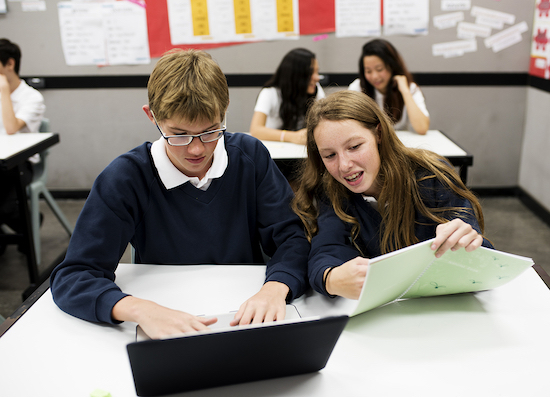Lay the Foundation for a Great Year in Math Class
A MiddleWeb Blog
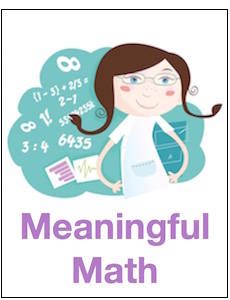
I want to share how I started off my school year. This year I did things a little differently.
So many students come into my class with math anxiety each fall that I’ve been desperate to win them over to math the first few days. As a result, I’ve sometimes (okay, often) gone overboard planning activities to convince them that math can be fun.
Now I’ve finally realized: I have the whole year to help them learn to love or at least tolerate math. I don’t have to do it all in the first week of class. That realization took a lot of pressure off me and allowed me to have a more enjoyable and less chaotic first week of school.
This year, instead of bombarding them with activities, I decided to go slow and focus on (1) making my students feel welcome; (2) building good working relationships in the classroom, (3) setting classroom norms, and 4) doing a little math!
If you looked at my planner for the first week, you would see a lot of activities marked through! I feel good about how these first five days went for the most part. Below I have shared what I did, what went right, and what I probably won’t do again.
Making My Students Feel Welcome
For years the first thing I did on the first day of school was to call roll in the front of the whole classroom. Invariably I would embarrass some poor student by calling them by their first name, when they go by their middle name or some other nickname. Either that or I badly mispronounced their first name, last name or both. Neither was a good way to welcome students to my class.
Changing that one routine was one of the best decisions I have ever made as a teacher. Now I walk around the room and personally meet each student one-on-one and make some phonetic notes about how to say their name.
While finding out what name my students preferred to be called and how to pronounce it, I also asked them to tell me one thing about themselves – anything they would like to tell me.
Some students reminded me about an older brother or sister, some told me their favorite movie, others let me know they were shy, and some told me about their after-school jobs. I wrote down the information next to their name and I was so surprised how much these personal details helped me learn their names.
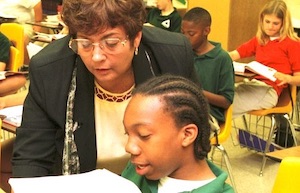
The assignment is extremely easy and students had no problems completing it on their own. Although it took me about 1/3 of the class period to individually meet each student, it was worth the time.
This year I also continued my tradition of taking each student’s picture with a Polaroid camera and posting it on my wall of “Mathematicians.” This welcomes them to my room and shows them that they are mathematicians and belong here. And honestly I get a kick out of how excited they get waiting for their picture to develop. (A lot of them are convinced it won’t develop if they don’t shake it!) Not a day goes by that students don’t stop at the board to look at their retro photos.
Building Relationships
Obviously I want my students to get to know one another so they will be comfortable working with each other, so we did a few get-to-know-you activities. As a lifelong introvert I am not a big fan of icebreakers, and I don’t want to put students on the spot the first few days of school.
So I did “blobs and lines” which is where students make blobs with other students who share the same characteristic as them (for example, maybe spring is their favorite season, or maybe they share a love of 80s music), or students line up least to greatest based on things like how many pets they have, or shoe size, or how many siblings they have.
The students seemed to enjoy the activity, but it didn’t really do the job of team building that I would like so I may do something different next year. Maybe one of these icebreakers from NPR.
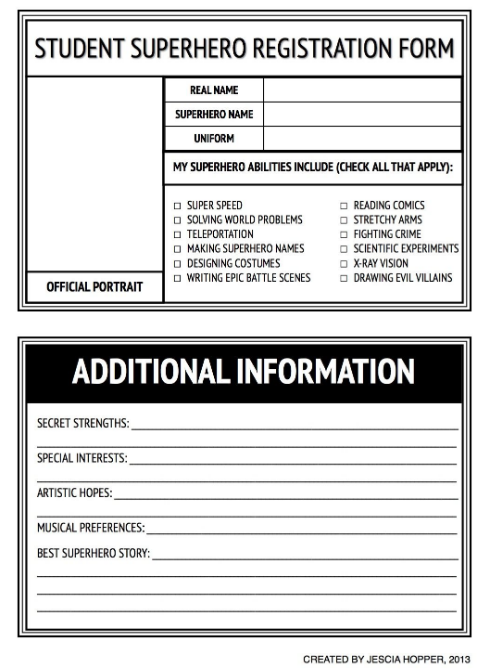
While they were working on their forms, I walked around and talked to them. I enjoyed seeing what superhero names and powers they chose. It was another way for me to get to know them and it only took 15-20 minutes to complete. As a bonus I used their drawings to fill up my blank bulletin board!
Part of building relationships is getting to know people so I had students fill out “Math Mindsets and Attitudes,” [click “PDF” to download] – a questionnaire from Geoff Krall’s book, Necessary Conditions. The first question asked, “When you hear the word math, what words pop into your head?” The answers were telling. They included boring, busywork, stressful, ugh, painstakingly hard, scary and tedious. Although the responses are a little distressing, it is good to know they feel.
I found out so much about my students from this survey. For instance, only 39% of my students feel that they are good at math and only 54% think math is something that they will use later in life. On a more positive note, 70% feel that it is okay to make a mistake in math class. I plan to give this again around Christmas break. With luck, more of my students will feel like they are good at math!
Setting the Norms
Last year I struggled with cooperative learning. I felt my attempts were not as productive as they should be. Students weren’t staying on task and they weren’t really working together. I wanted to do better this year, so I leaned heavily on Krall’s ideas in Necessary Conditions to help me set out some cooperative learning norms in my classes.
I have found whatever I consistently emphasize at the very beginning of the year will become ingrained in my students. So every day for the first several days we started class by discussing the norms. They are as follows:
Norm #1: Do the same problem, the same time.
Norm #2: Ask the group for help and clarification when needed.
Norm #3: All heads in, all feet in.
Norm #4: Everyone must contribute.
Every day for the first four days we would read over them and discuss what we thought each one meant. Usually we had a short five-minute discussion, but it helped emphasize to the students that these behaviors were important and expected in my classroom. I am hopeful that if I continue to promote these norms I will see an improvement in the quality of cooperative learning.
A Little Math…
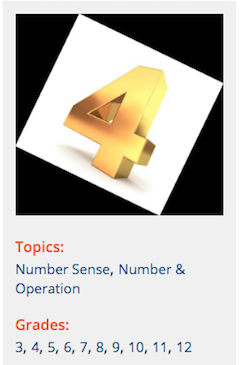
The objective is to find every number 1-20 using only four 4’s and any operation you know. That’s it. You can say that one sentence, and students start to pick up their pencil because it’s something they can do. The students seem to enjoy it every year and come up with some creative ideas. Boaler gives this example for “5”… √4 + √4 + 4⁄4.
I had students stay after to try and find more numbers. Also, this is a good activity for students who think they can’t do math so it’s a good way to build their “math confidence.”
The blog Mathequalslove had a great activity similar to “The Four Fours” that I wanted to do, but I didn’t see it until the day before my students came and I didn’t have time to switch activities that late in the game. Here is the link to it if you’re interested: Twos to Nines Challenges.
Looking Forward
I tried to be welcoming and build a pleasant classroom dynamic. I think things went pretty smoothly – about as smoothly as the first week of school can go! I hope that I’ve set my classroom and students up for success in the coming year. Now that the first week of school is out the way, I’m looking forward to getting down to business!
I hope everyone had a great first week of school! If you haven’t started school yet, then good luck!

